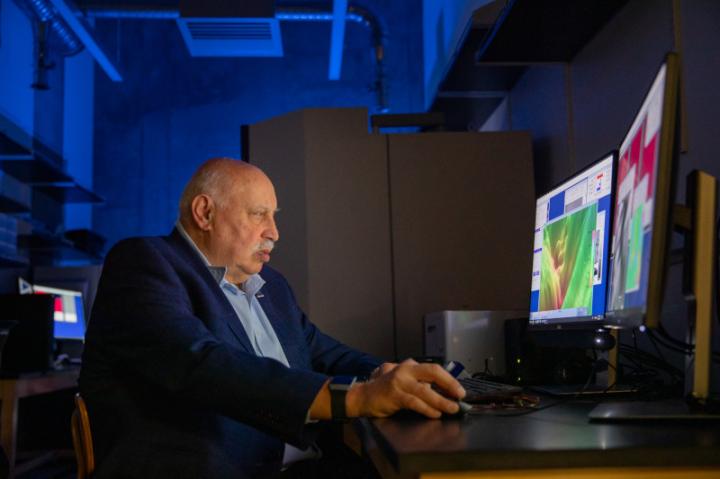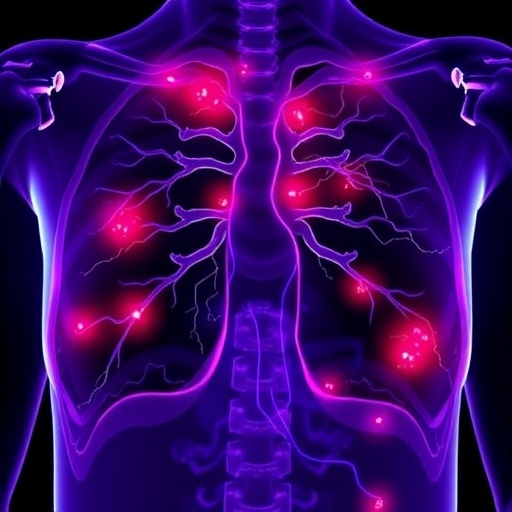
Credit: Photo courtesy of Northern Arizona University
One of the most challenging aspects of the COVID-19 pandemic has been the lack of testing needed to detect and trace infections–and without adequate testing, government officials do not have the data they need to make the best possible decisions in the interest of public health.
In addition to being in short supply, most tests use biochemicals that are expensive and difficult to produce, require long turnaround times for test results and produce a high number of false negative results–meaning that some people who test negative might still be infected and unknowingly spread the disease. And although newer testing methods that detect antibodies in the blood, based on the so-called ELISA method, are rapidly coming online, scientists and physicians question their efficacy.
NAU professor Miguel José Yacamán, a physicist and materials scientist in the Center for Materials Interfaces in Research and Applications (¡MIRA!), has assembled an interdisciplinary team to develop a new test technology that promises to overcome all these challenges. The project, “Development of a New Test for SARS-CoV-2 using Single Molecule Surface Enhanced Raman Spectroscopy,” was recently awarded a $200,000 grant from the National Science Foundation’s Rapid Response Research (RAPID) funding program supporting virus-related research. Although the team has one year to develop the new test, José Yacamán plans to achieve this goal even sooner.
The team will develop the new test by applying concepts from physics, not biochemistry, José Yacamán explains. They will focus on recent discoveries in the emerging fields of nanotechnology, plasmonic nanoparticles and 2D materials (similar to graphene).
“The project team will use non-traditional techniques to detect virus in infected patients. We will develop an alternative method based on recent advances in physics related to the interaction of light with matter,” he said.
The method, Single Molecule Surface Enhanced Raman Spectroscopy (SM-SERS), will detect the S proteins of the SARs-Cov-2 virus, which participate in infection at the cellular level. “The ability of SM-SERS to detect as little as one molecule of protein will enable healthcare professionals to detect infection early and follow up with patients who recover from the illness.”
The principal investigator of the project, José Yacamán will work in collaboration with two ¡MIRA! colleagues, associate professor Andy Koppisch, a biochemist, and associate professor of practice Rob Kellar, a biomedical engineer; and with Regents’ Professor Paul Keim, a microbial geneticist, and professor Dave Wagner, a disease ecologist, both with NAU’s Pathogen and Microbiome Institute (PMI).
In his previous work, José Yacamán has used surface-enhanced Raman spectroscopy to detect glycoproteins and sialic acid as a method of testing for breast cancer, which is now in the final approval stage for commercial use.
“In the case of the SARS-CoV-2 virus, it was a natural extension to apply the same techniques,” he said, “but it will require the expertise of our PMI colleagues, who are growing the SARS-CoV-2 virus in their labs, to succeed.”
Keim, PMI executive director, said, “Major advances in science almost always occur at the interface between disciplines, and this is a great example. I think that this work between ¡MIRA! and PMI could be a game changer in our fight against COVID-19.”
“This project is a joint effort between researchers in ¡MIRA! and PMI,” said ¡MIRA! director and professor Jennifer Martinez. “It shows the power of interdisciplinary work for creating new ideas and new funding opportunities–and, most importantly, the importance of having centers of excellence to drive new research for NAU.”
“If successful, our research will be the first step in developing a method based on physics that will be fast and inexpensive, with high sensitivity and specificity and low percentage of false negatives,” said Yacaman. “This test will be a much more precise and reliable method to detect infections.”
“It is conceivable that once we’ve developed this test, portable Raman equipment can be used widely in many different populations; for instance, in rural or remote communities or in point-of-care stations in schools, factories, community centers and so on, in addition to traditional testing sites,” he said.
“Once widespread testing is under way, further analysis of the SM-SERS data will help scientists understand changes on the virus proteins and help develop antiviral drugs.”
###
About Northern Arizona University
Northern Arizona University is a higher-research institution providing exceptional educational opportunities in Arizona and beyond. NAU delivers a student-centered experience to its 31,000 in Flagstaff, statewide and online through rigorous academic programs in a supportive, inclusive and diverse environment. Dedicated, world-renowned faculty help ensure students achieve academic excellence, experience personal growth, have meaningful research opportunities and are positioned for personal and professional success.
Media Contact
Diane Rechel
[email protected]
Original Source
https:/




